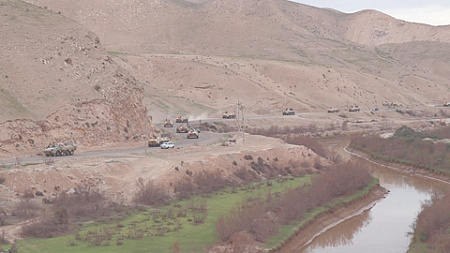Russia, Uzbekistan Launch Drills to Counter Regional Threats

Russian and Uzbek military forces are set to conduct joint tactical exercises in Uzbekistan from July 15 to 21, a move aimed at bolstering security in Central Asia. The drills, codenamed “Hamkorlik-2025” (Cooperation-2025), will focus on storming and clearing populated areas seized by illegal armed groups, according to Russia’s Ministry of Defense. This show of military partnership comes amid heightened regional security concerns.
The Russian contingent, drawn from its 201st military base in neighboring Tajikistan, includes specialized mountain and assault units, electronic warfare teams, and operators of reconnaissance and FPV drones. The exercises will also feature Mi-24 attack helicopters. The collaboration highlights Uzbekistan’s own growing defense capabilities, with the country having recently showcased over 100 domestically produced military items at the IDEX-2025 exhibition in Abu Dhabi.
According to Igor Shestakov, a Bishkek-based political analyst, the drills underscore Moscow’s primary role as a security guarantor along the CIS’s southern frontier. This is particularly significant as Uzbekistan is not a member of the Russia-led Collective Security Treaty Organization (CSTO) but maintains active bilateral military cooperation with Moscow. Shestakov notes that these maneuvers are symbolic, especially with Turkey seeking to increase its own security influence in Central Asia.
Shestakov argues that Russia maintains a decisive edge through its military bases in Tajikistan and Kyrgyzstan, assets that Turkey lacks in the region. “Turkey’s approach to security in Central Asia is primarily commercial, focused on selling its own armaments,” he stated. “In contrast, Russia operates within a framework of allied military cooperation, often providing military aid at no cost, as seen with Kyrgyzstan and Tajikistan.”
The exercises are driven by tangible threats, with security experts estimating up to 100,000 militants are present in Afghanistan. An additional 20,000 Central Asian nationals are believed to be in Syria, with the potential to return via Afghanistan. While the Taliban, which Russia is considering removing from its list of terrorist organizations, may not pose a direct threat, their incomplete control over Afghanistan provides a safe haven for various militant factions. Experts warn that external actors could exploit these groups to destabilize the region and discredit the CSTO.
Analysts also point to the “Syrian model,” where a secular government was targeted for overthrow, as a potential playbook for Central Asia, a region of predominantly secular states. Preserving this secularism is now a critical challenge. “Tajikistan appears to be the most vulnerable link at the moment, despite the presence of the Russian military base,” Shestakov believes. He suggests that the region’s failure to form its own internal security alliance has made partnerships with external powers like Russia essential. For Uzbekistan’s President Shavkat Mirziyoyev, these joint exercises are a clear affirmation of Russia’s position as a key partner in safeguarding regional stability.